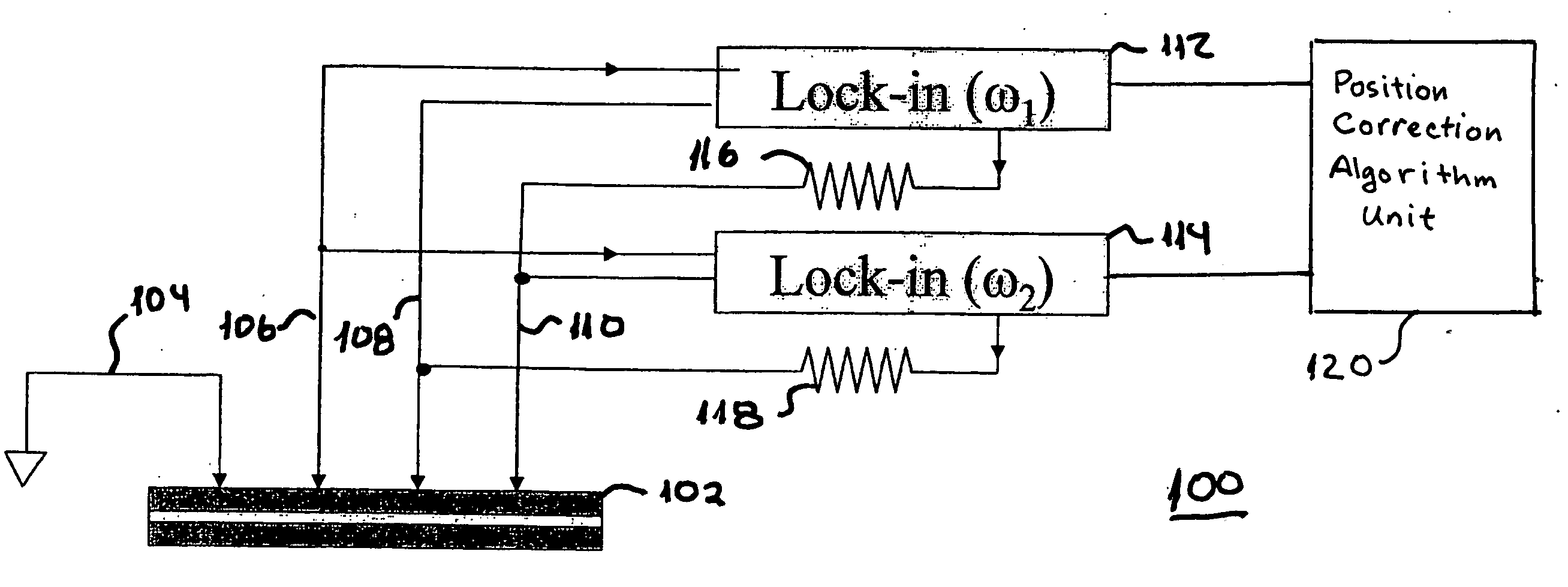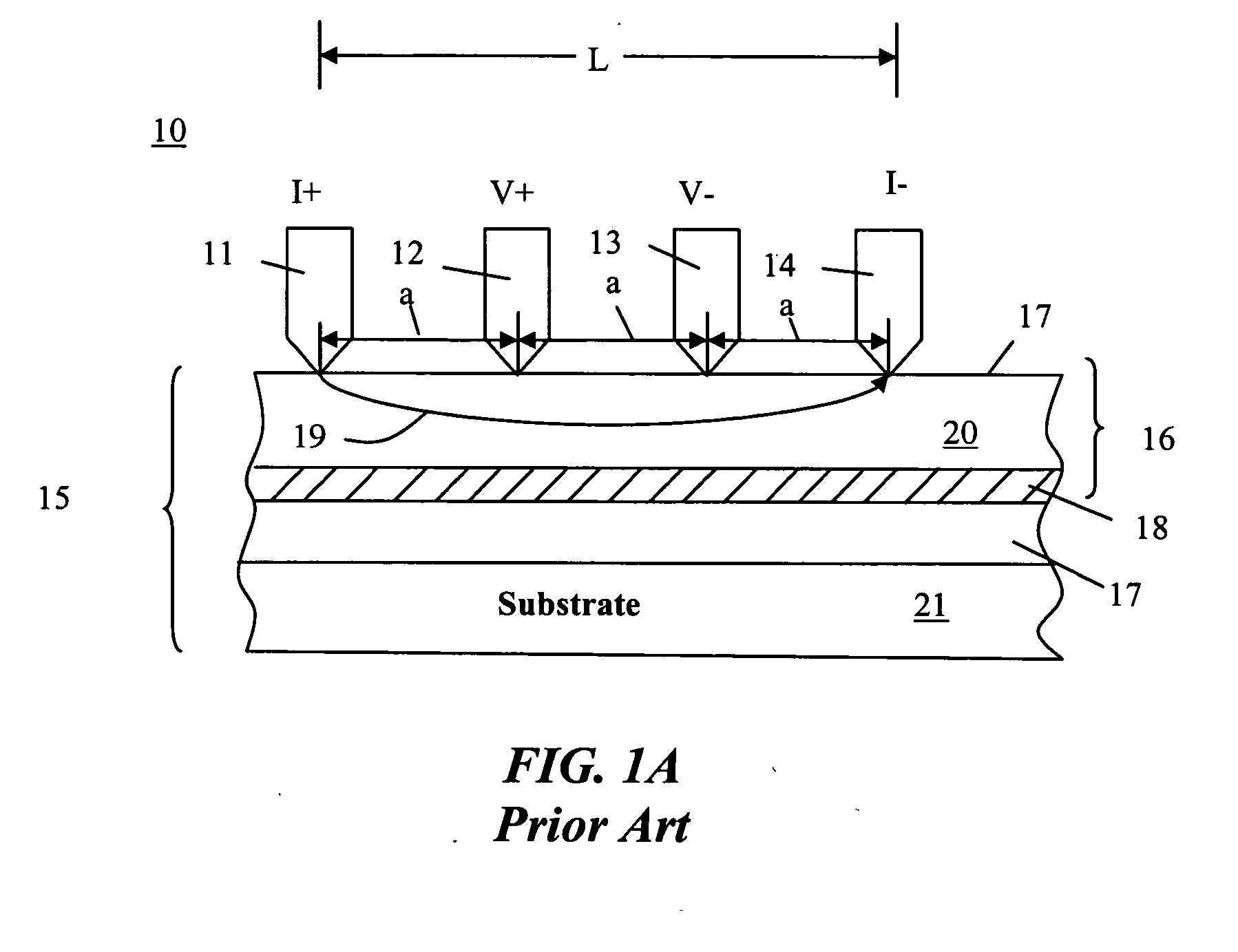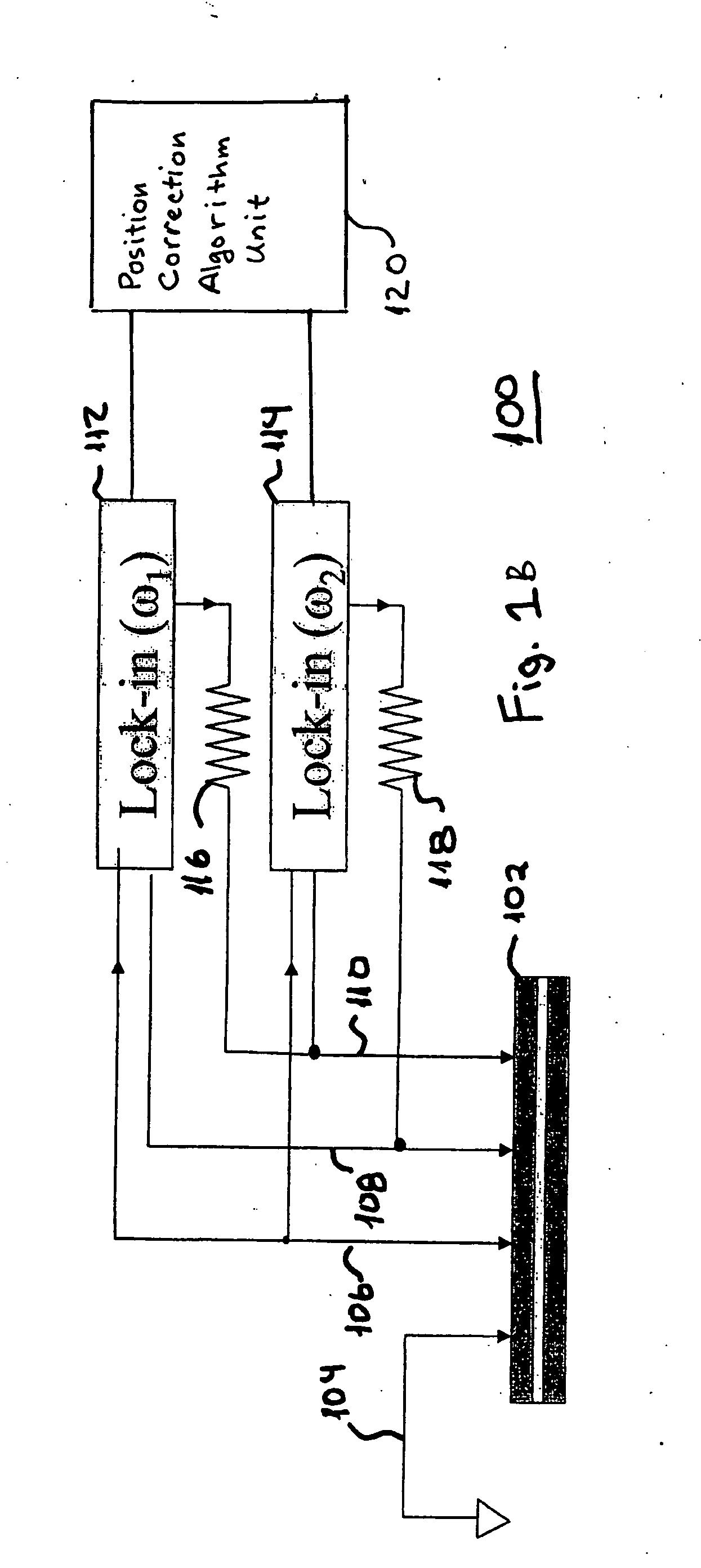High frequency measurement for current-in-plane-tunneling
a technology of current-in-plane tuning and high frequency measurement, which is applied in the direction of resistance/reactance/impedence, individual semiconductor device testing, instruments, etc., can solve the problems of difficult mechanical improvement of the measurement system to eliminate this miniscule motion and the error of resistivity measuremen
- Summary
- Abstract
- Description
- Claims
- Application Information
AI Technical Summary
Benefits of technology
Problems solved by technology
Method used
Image
Examples
Embodiment Construction
[0019] Referring now to FIG. 1B, a schematic of a measurement system 100 constructed in accordance with a preferred embodiment of the present invention is shown. The measurement system 100 is preferably used to measure a property such as the resistance per square or the magneto-resistance or areal resistance of a film stack 102. The embodiment of the system 100 shown inFIG. 1A utilizes four probes 104, 106, 108 and 110. Probe 104 provides a ground reference for the measurement system 100. Two lock-in circuits 112 and 114 are used to provide probe signals to the probes 108 and 110 and receive response signals from probes 106, 108 and 110. The first lock-in circuit 112 produces a first probe signal having a first frequency of ω1. Preferably, the first probe signal is a current signal. The first probe signal is provided from the lock-in circuit 112 to the probe 110 through a bias resistor 116. In response to the first probe signal, a corresponding voltage is created between probes 106 ...
PUM
 Login to View More
Login to View More Abstract
Description
Claims
Application Information
 Login to View More
Login to View More - R&D
- Intellectual Property
- Life Sciences
- Materials
- Tech Scout
- Unparalleled Data Quality
- Higher Quality Content
- 60% Fewer Hallucinations
Browse by: Latest US Patents, China's latest patents, Technical Efficacy Thesaurus, Application Domain, Technology Topic, Popular Technical Reports.
© 2025 PatSnap. All rights reserved.Legal|Privacy policy|Modern Slavery Act Transparency Statement|Sitemap|About US| Contact US: help@patsnap.com



